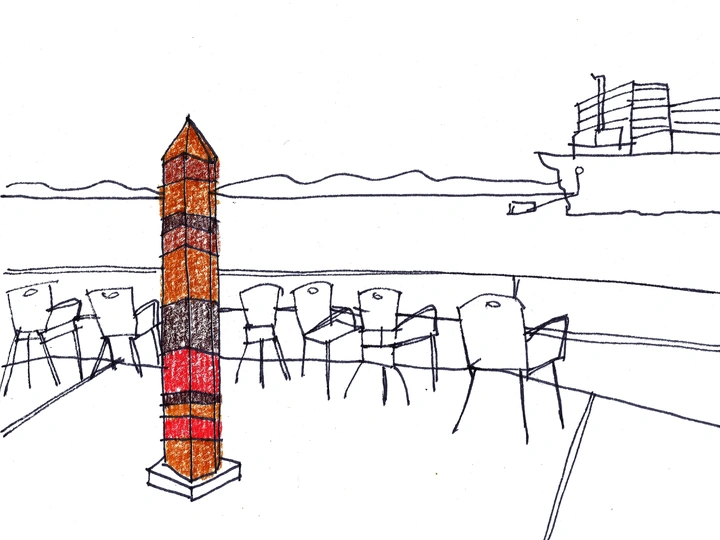‘PEOPLE ARRIVING, PASSING, ENCOUNTER, LEAVING’

I am always on the lookout for projects I can do together with and for people.
Trained as a landscape architect and urban planner, I enjoy designing. As a
designer, I think it is crucial to consider the topography, the landscape, the
relationship with existing buildings, the water system, the ecosystem, the wind
and the importance of the place on people’s mental map.
I am fascinated by the aesthetics of authentic architectural styles as well as
utensils and everyday objects when they come from a society that reflects on
its history and contemporary customs while interacting with the global, international flow of consumer goods. When I travel, I spend time and attention
discovering authentic craftsmanship and the artisans behind these objects.
From my ever-existing appreciation for crafts, I found the motivation to study
sculpture and ceramics myself.
With the experience of some small building projects in Morocco, I learned in
areas such as designing and building with natural materials, water and waste
management, involving the community in the design process, building with
the local craftsmen, budget control and planning. I take a supporting role, with
great respect and interest in the community. Even when I attracted an important
part of the budget myself, I keep wondering who decides on priorities and
what is my role in ownership of the result, of the new place or object that was
created.
I get energy from warmly welcoming “the stranger” (newcomer or tourist) to
my own city and my home. I continue inviting myself and my family to travel
in a foreign country. As chairwoman of non-profit organization ‘Global works’
in the region of my hometown Lier, I support a team of volunteers and professionals to help refugees / newcomers find housing and work opportunities.
Rijeka is a city where layers of time and spheres of influences of cultures come together and fuse in streets, buildings and encounters of people. This mix shapes the heritage of tomorrow. For the European Capital of Culture 2020, diversity was central, and my project ties in with the ‘Place of encounters’ theme of the Meds summer workshop.
The project promotes encounters between residents, migrants and participants, each with their specific background signal. Rijeka lies on the Balkan route, an important migration route from the (Near) East to Europe. Although migrants remain largely invisible here, 26,000 illegal border-crossing migrants passed through the city and region last year. Only 4 % stays around. Migration is of all times and should be seen as an objective determination with (also) positive effects.
The idea is to place striking bollards at several public places in Rijeka. These new shapes will become recognizable in the streetscape and indicate a route towards the West. But you can just as easily follow the poles in a different direction. It is like a current crossing Rijeka, like the river Rječina from source to sea.
The pillars can carry different symbolic meanings depending on their shape and proportions:
- Milestone or signpost for migrants and tourists
- Border post or memorial stone for migrants who did not survive their journey
- Sundial indicating time
- Monolith as a foothold and foundation
- Historical relic, referring to ancient civilizations
- Meeting point, for reflection and dialogue on migration
- Landmark in the city for meeting up
The posts have a recognisable but renewed shape, detached from weathered columns or natural rocks.
Rammed earth creates layered structures reminiscent of geological formations, an accelerated representation of soil formation under the city. This process reflects the historical stratification of the Anthropocene studied by archeologists, with Troy as an archetypal example.